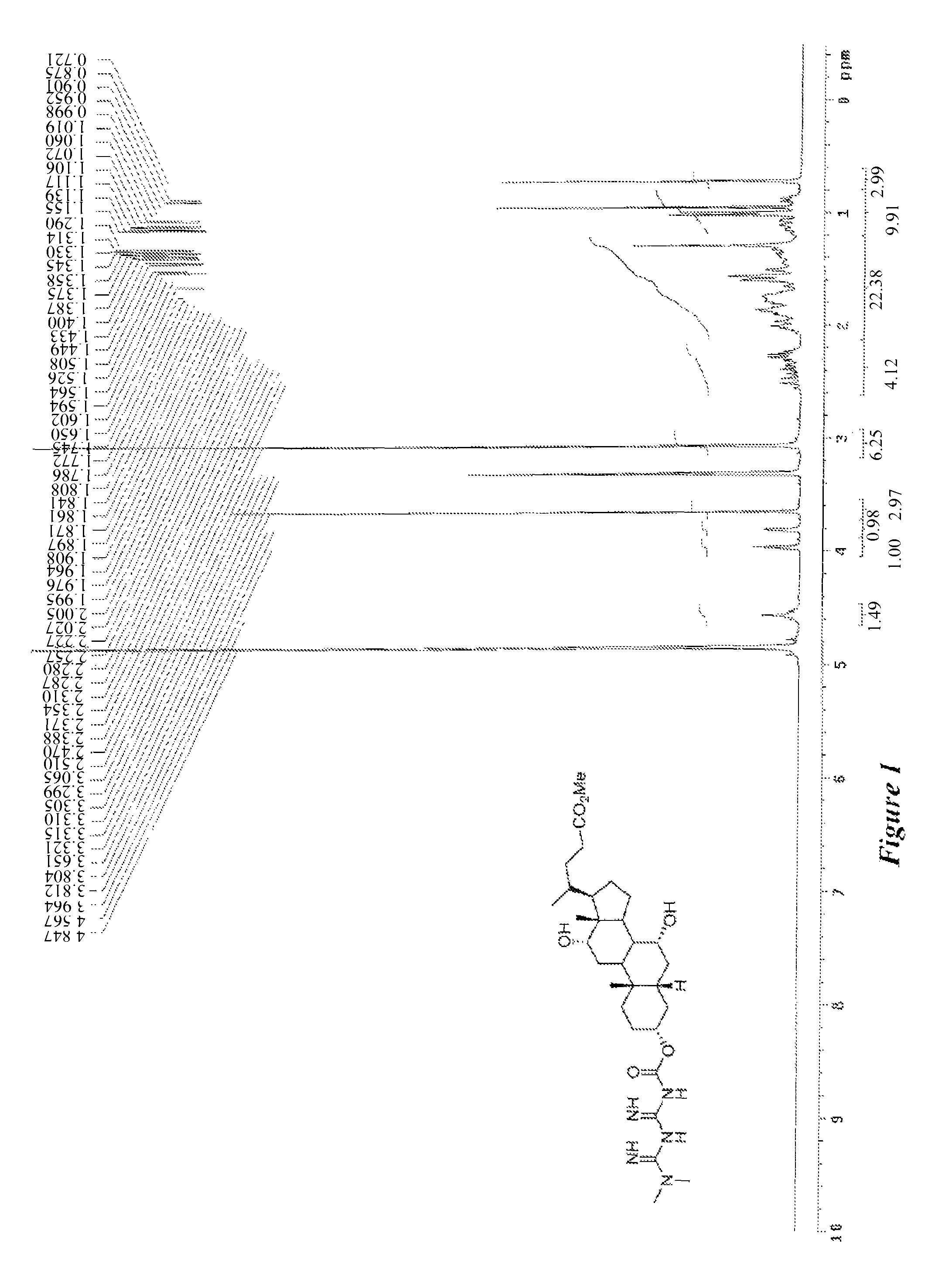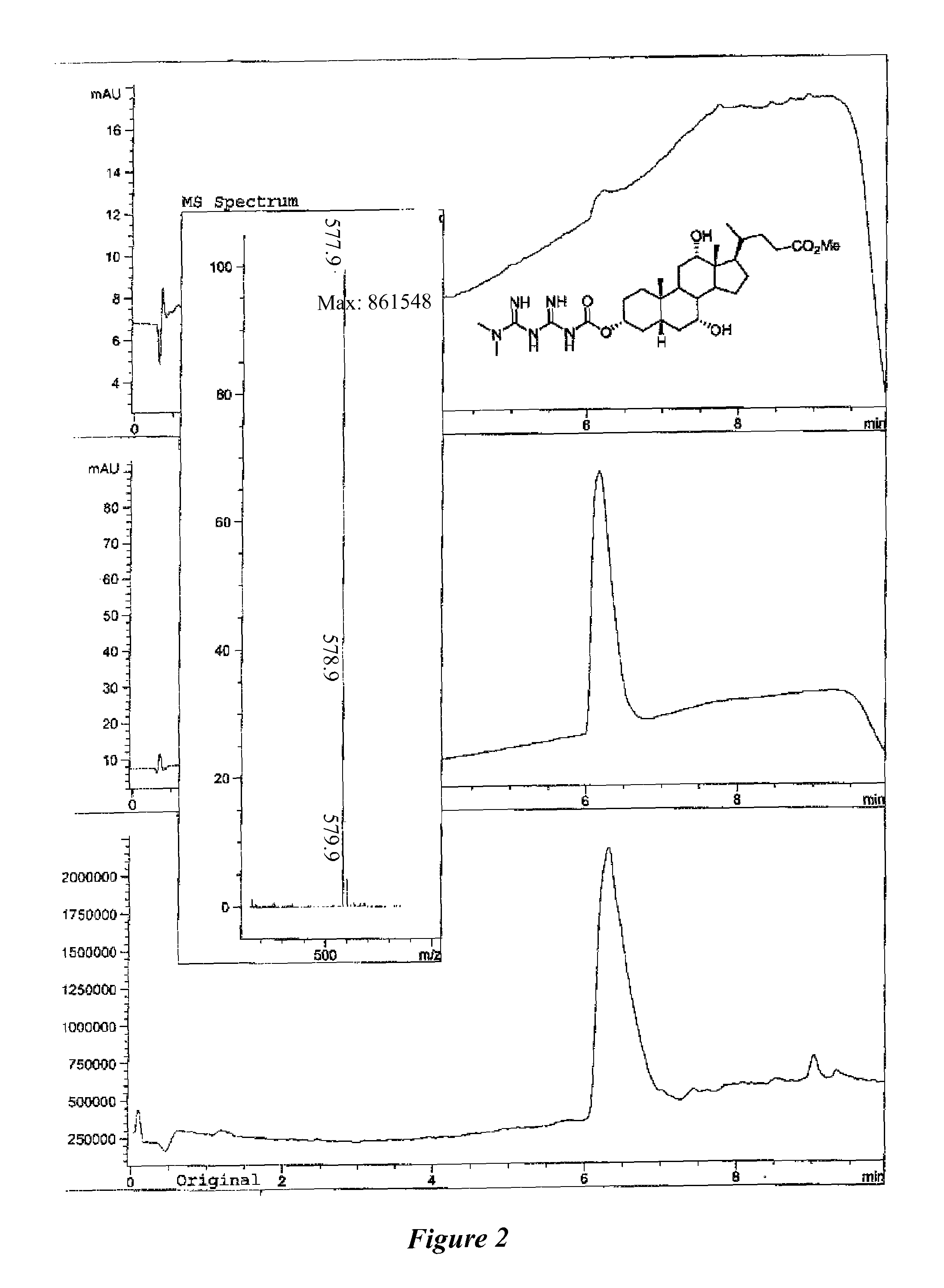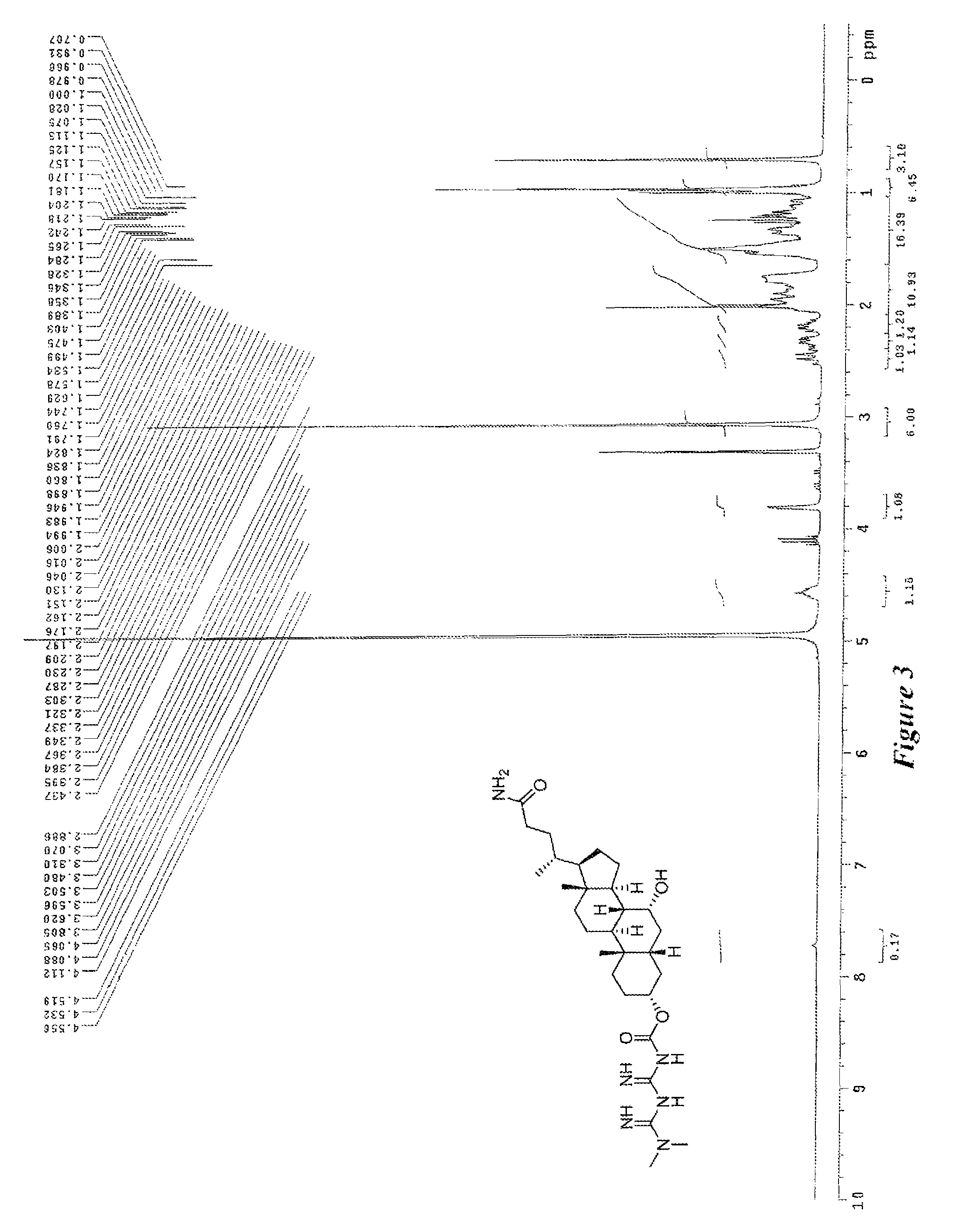Anti-diabetic compounds
a technology of antidiabetic compounds and compounds, applied in the field of new antidiabetic compounds, can solve the problems of hyperglycaemia, renal dysfunction, increased glucose concentration in the blood, etc., and achieve the effect of avoiding adverse effects of administration
- Summary
- Abstract
- Description
- Claims
- Application Information
AI Technical Summary
Benefits of technology
Problems solved by technology
Method used
Image
Examples
example 1
Preparation of Compound 2
[0076]Step 1:
[0077]
[0078]Methyl cholate was prepared from cholic acid using the method of J. Med. Chem., 2004, Vol. 47, No. 17, 4213-4230.
[0079]Step 2:
[0080]
[0081]To a solution of cholic acid methyl ester (2.0 g, 4.7 mmol) stirring in pyridine (5 mL) at 0° C. was added 4-nitrophenylchloroformate (1.4 g, 7.1 mmol). The mixture was stirred at 0° C. for 30 min and at room temperature for one hour. The reaction mixture was partitioned between ethyl acetate (50 mL) and 1 N HCl (50 mL). The aqueous layer was extracted with ethyl acetate (3×30 mL). The combined organic layers were washed with brine (50 mL), dried over MgSO4, and concentrated in vacuum to afford crude compound 1.
[0082]Step 3:
[0083]
[0084]To a suspension of sodium hydride (2.4 g, 0.1 mmol) in THF was added metformine hydrochloride (18.5 g, 0.11 mmol) slowly at 0° C. After stifling at the same temperature for 30 min, the solution of compound 1 in THF was added dropwise. The reaction mixture was stirred...
example 2
Preparation of Compound 5
[0085]Step 1:
[0086]
[0087]To a solution of ethyl chenodeoxycholic acid (3.93 g, 10.0 mmol) and triethylamine (2.0 ml, 14.4 mmol) in anhydrous tetrahydrofuran (25 mL) was added ethyl chloroformate (1.0 ml, 10.5 mmol) dropwise at 0° C. with stifling. The suspension was further stirred at room temperature for half an hour. A stream of ammonia was bubbled into the suspension using a gas-dispersion tube for 10 min and then the resulting mixture was concentrated under reduced pressure. The residue was partitioned between dichloromethane and water. The organic layer was washed with brine, dried over MgSO4, and concentrated to afford compound 3.
[0088]Step 2:
[0089]
[0090]To a solution of compound 3 (2.00 g, 5.11 mmol) stirring in pyridine (5 mL) at 0° C. was added 4-nitrophenylchloroformate (1.55 g, 7.67 mmol). The mixture was stirred at 0° C. for 30 min and at room temperature for one hour. The reaction mixture was partitioned between ethyl acetate (50 mL) and 1 N HCl...
example 3
Animal Test
[0094]Approximately 7-9-week-old ICR mouse were purchased from BioLASCO Taiwan Co., Ltd (Taipei, Taiwan). The animals were randomly divided into 4 groups as shown in the following Table 1:
[0095]
TABLE 1Concen-DoseTestDosagetrationVolumeNo.GroupCompound(mg / kg)(mg / mL)(mL / kg)1Vehicle controlSolvent0010(Negative control)(5% DMSOin WFI)2Active controlMetformin1501510Hydrochloride3Test 1Compound 252552.5104Test 2Compound 2105010510
[0096]Linear analysis of the glucose monitoring system: eight concentrations (0, 50, 100, 200, 300, 400, 500, 600 mg / dL) of glucose solution were determined duplicate. The animals were fasted approximately 4 hours before dosing. Then, the animals were administered with the test compounds via oral gavage. After 30 minutes of the test compound dosed, the animals were administered with 1.5 g / kg glucose solution (Concentration: 0.15 g / mL, Dose volume: 10 mL / kg) via oral gavage. The blood glucose was determined before the test compound dosing, before glucos...
PUM
| Property | Measurement | Unit |
|---|---|---|
| temperature | aaaaa | aaaaa |
| concentrations | aaaaa | aaaaa |
| concentrations | aaaaa | aaaaa |
Abstract
Description
Claims
Application Information
 Login to View More
Login to View More - R&D
- Intellectual Property
- Life Sciences
- Materials
- Tech Scout
- Unparalleled Data Quality
- Higher Quality Content
- 60% Fewer Hallucinations
Browse by: Latest US Patents, China's latest patents, Technical Efficacy Thesaurus, Application Domain, Technology Topic, Popular Technical Reports.
© 2025 PatSnap. All rights reserved.Legal|Privacy policy|Modern Slavery Act Transparency Statement|Sitemap|About US| Contact US: help@patsnap.com



